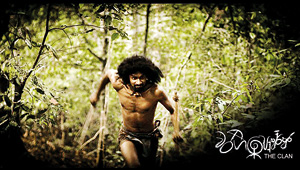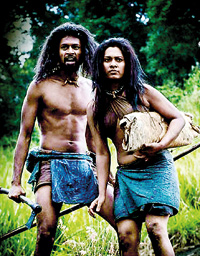Power of people in filmmaking
In 1976 Indian film ‘Manthan’ (The Churning) became the first film in the world to be produced not by a single production house, but by the farmers of the Gujrat Co-operative Milk Federation who contributed Rs.2 each for the production of the movie. The movie directed by reputed Indian director Shyam Benegal was written by Verghese Kurien who is hailed as the Father of the White Revolution in India or Operation Flood which started in 1970, ushering an era of plenty, from a measly amount of milk production and distribution.
 Kurien was on a mission to save Indian milk farmers from middlemen and the film proved a best campaign for this and it won the National Film Award for Best Feature Film in Hindi and National Film Award for Best Screenplay for Vijay Tendulkar, and was also selected Indian submission for the Academy Award for Best Foreign Language Film for 1976.
Kurien was on a mission to save Indian milk farmers from middlemen and the film proved a best campaign for this and it won the National Film Award for Best Feature Film in Hindi and National Film Award for Best Screenplay for Vijay Tendulkar, and was also selected Indian submission for the Academy Award for Best Foreign Language Film for 1976.
In a similar move, Sri Lanka Women’s Development Services Cooperative Society Ltd, a cooperative movement with its over 80,000 members has come forward with remarkable mission to support art and cinema by producing ‘Wariga Pojja’ (The Clan) a film an thoughtful insight into our own history. Based on a short story tittled ‘Warigaya’ written by Nandasiri Gamage, the film is the maiden direction of Thushara Tennakone and it stars Jagath Manuwarna, Nadeeshani Nilukshi, Nayana Hettiarachchi, Somaweera Gamage and Poopalasingam Prathepan in the stellar cast.
 “To be a part of making a good film from the savings we have collected from the membership is a great contribution to the arts and cinema of this country and it’s a great achievement for us,” says Mr. Nandasiri Gamage, General Manger of Sri Lanka Women’s Development Services Cooperative Society Ltd (SLWDSCSL) which was started 25 years ago with just eight members but spread to over 80,000 throughout the country.
“To be a part of making a good film from the savings we have collected from the membership is a great contribution to the arts and cinema of this country and it’s a great achievement for us,” says Mr. Nandasiri Gamage, General Manger of Sri Lanka Women’s Development Services Cooperative Society Ltd (SLWDSCSL) which was started 25 years ago with just eight members but spread to over 80,000 throughout the country.
 When the corporate sector with multibillion profits has hardly invest or spend on art and culture, the attempt by SLWDSCSL to make a film is commendable move for the betterment of cinema and art. “Enriching the cooperative community with knowledge on art and culture is as equally important as economically empowering them,” Mr. Gamage said.
When the corporate sector with multibillion profits has hardly invest or spend on art and culture, the attempt by SLWDSCSL to make a film is commendable move for the betterment of cinema and art. “Enriching the cooperative community with knowledge on art and culture is as equally important as economically empowering them,” Mr. Gamage said.
The film revolves around tragedy befallen on the indigenous Veddha community in Sri Lanka specially with the spread of Malaria towards the end of British colonial rule. It depicts how a young man from the community wages a war to protect his clan from oncoming dangers. The effort by the selfless young man carries a strong message to the present society which is overcome by selfishness, greed and power.
Started with an investment of Rs. 40, over the last 25 years the SLWDSCSL has proved the power of cooperative movement as today it has savings over Rs. 400 million. With a major budget, the film was shot in six major locations including Belihuloya, Sinharaja, Hanthana, Thanthirimale and Peradeniya.
‘Wariga pojja’ is now being screened at Ritz Borella and other Ridma circuit cinemas around the country.


